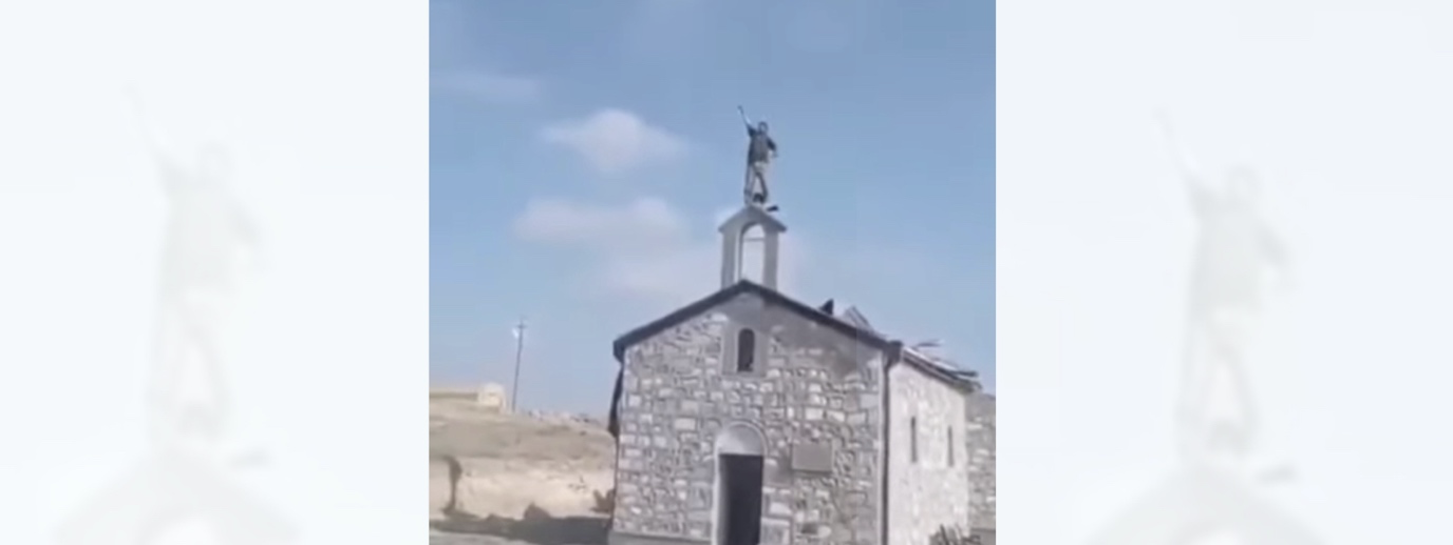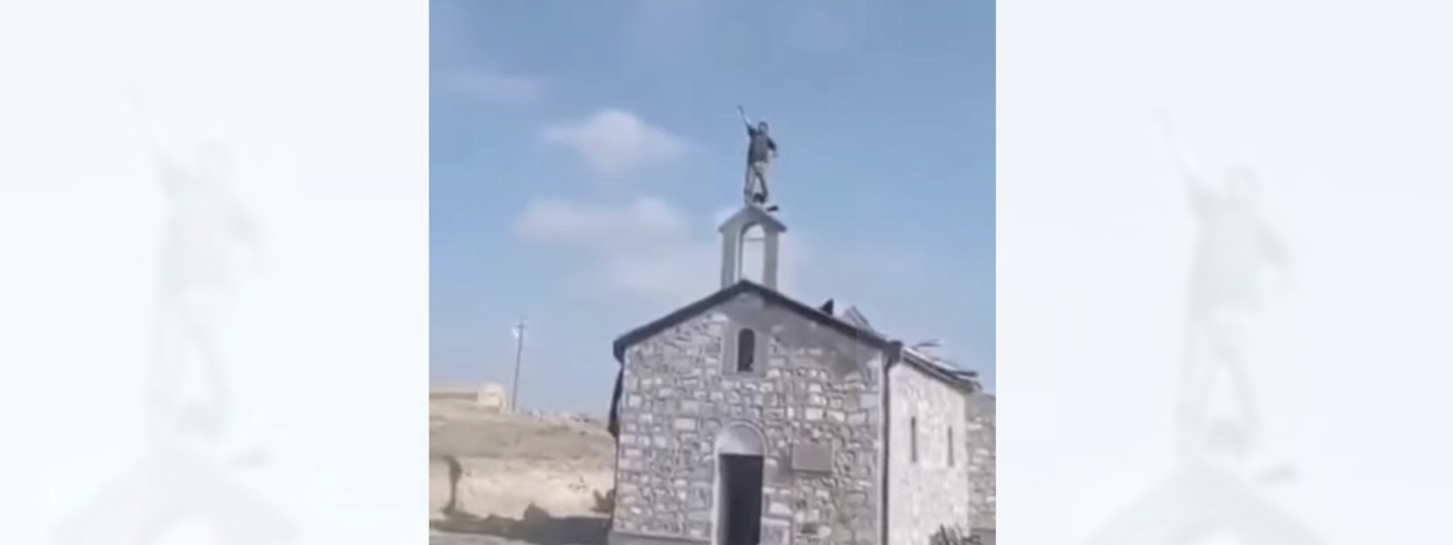Church and memorial desecration in post-ceasefire Nagorno Karabakh
After the ceasefire between Azerbaijan and
Church and memorial desecration in post-ceasefire Nagorno Karabakh

After the ceasefire between Azerbaijan and Armenia was announced, visual evidence of memorial and church destruction surfaced

As the parties to the Nagorno-Karabakh conflict agreed on a Russia-brokered ceasefire, visual evidence of Armenian church and monument desecration in territories acquired by Azerbaijan started to appear online.
While the ceasefire signed on November 10 brought the immediate fighting to an end, the threat of destruction of Armenian cultural heritage sites in areas taken by Azerbaijani forces persists. Previous research, including a forensic investigation published in 2019 in the online arts magazine Hyperallergic, has documented the systematic destruction of Armenian cultural monuments and heritage sites between 1997 and 2006 in Nakhichevan, an autonomous republic of Soviet Azerbaijan that became an exclave of the Republic of Azerbaijan after the fall of the Soviet Union.
New videos, which have surfaced on social media over the past few weeks, however, show graffiti on churches in territory newly seized by Azerbaijani forces, as well as Azerbaijani soldiers demolishing monuments, crosses, and other religious and cultural sites. These videos can be geolocated and verified using open-source techniques.
Open-source evidence of cultural destruction in Nagorno Karabakh
On November 14, a video emerged online of an Azerbaijani soldier standing on top of an Armenian chapel, shouting “Allahu Akbar” (“God is great” in Arabic). Behind the soldier, a toppled Christian cross can be seen.
Jihaddist-mercenaries brought by @presidentaz & @RTErdogan to conquer #Artsakh are doing exactly what they are supposed to do with #Armeinan cultural heritage.@UNESCO @Jos_Douma @NLMFAEurope @MFA_Lu @BuZaTweedekamer @nl_intrelations pic.twitter.com/3mwsH4hQ5S
— Tigran Balayan (@tbalayan) November 14, 2020
A reverse image search of the video showed that the chapel in question was erected in the town of Mekhakavan (in Armenian)/Jebrayil (in Azerbaijani). The church was consecrated in October 2017 with the presence of Armenian soldiers, when Armenian forces were in control of the town. Under the terms of the recent ceasefire, the town is now under Azerbaijani control.

Also on November 14, reports of a vandalized Armenian church started appearing online. Ghazanchetsots (Holy Savior) Cathedral in Shushi was spray-painted with graffiti and at least one of the cathedral’s angel statues was defaced. Azerbaijani military forces also reportedly bombed the cathedral twice in October.
Shortly after occupying #Shushi #azerbaijani “soldiers”=#vandals started destroying the #church.
If those churches are “Albanian” (as #🇦🇿 side always mentions), then why do you destroy them?
You do it ‘cuz you perfectly know that those are #Armenian. #vandalism #Artsakh pic.twitter.com/PLh0MxYbF3
— Ռուբինա | Rubina (@LalayanRubina) November 16, 2020
Geolocation and visual analysis confirmed the damage to the Cathedral in Shushi/Shusha.

The city was taken by Azerbaijani forces on November 8, 2020. In a video taken by Azerbaijani forces that circulated on November 11, there is no graffiti visible on the Cathedral, suggesting that it appeared after this point, once the city was under Azerbaijani control.
Lastly, a video was posted on November 9 showing a monument dedicated to the Armenians fallen in the First Nagorno-Karabakh War being desecrated by Azerbaijani soldiers.
Azerbaijani soldiers in their natural behavior of desecrating & destroying Armenian Christian sites. This is the same army that destroyed 28,000 medieval Armenian monuments in Nakhichevan in 1997-2006 https://t.co/VsZY4Zwncw
— Simon Maghakyan (@simonforco) November 9, 2020
The location of the monument, according to researcher Simon Maghakyan, is in the town of Qubatli, which is in the newly gained Azerbaijani territory close to the new border with Armenia. While the monument itself cannot be seen in the satellite imagery, the path leading to the monument serves as the main geolocation detail, pointing to the building complex in the southern part of the town and confirming the location.

New videos and photos of reported cultural destruction continue to emerge online, but not all of them have sufficient background detail to allow for geolocation and verification. The DFRLab will continue to monitor the situation in post-ceasefire Nagorno-Karabakh, including possible human rights violations and intentional destruction of cultural heritage.
Lukas Andriukaitis is an Associate Director with the Digital Forensic Research Lab.
Follow along for more in-depth analysis from our #DigitalSherlocks.

